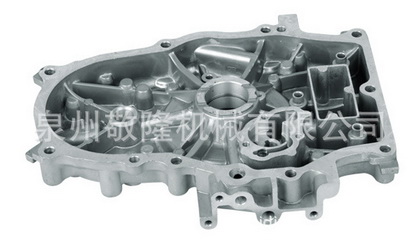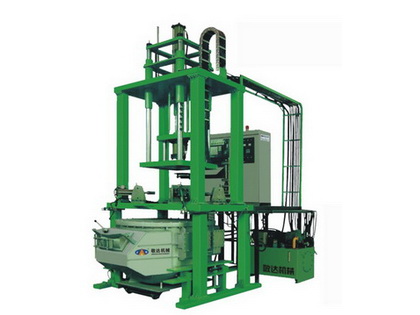
Detailed information


The unique advantages of low pressure casting are as follows
The results are as follows: 1. The pouring process parameters of low pressure casting can be set and adjusted arbitrarily in the process range, which can ensure the smooth filling of liquid metal, reduce or avoid the phenomenon of metal liquid churning, impact and splash during filling, thus reducing the formation of oxide slag, avoiding or reducing the defects of castings, and improving the quality of castings;
2. Liquid metal filling under pressure can improve the fluidity of liquid metal and the formability of castings is good, which is conducive to the formation of castings with clear contour and smooth surface, especially for large thin-walled castings;
3. The casting crystallizes and solidifies under the action of pressure, and can be fully fed, so the casting has compact structure and high mechanical properties;
4. The process yield of liquid metal is improved. Generally, the riser is not needed, so the yield of liquid metal is greatly improved, and the yield is generally up to 90%.
5. Good working conditions, high production efficiency and easy to realize mechanization and automation are also the outstanding advantages of low-pressure casting.
6. Low pressure casting has a wide range of application for alloy grades, and can basically be used for various casting alloys. It can be used not only for casting nonferrous alloy, but also for cast iron and cast steel. Especially for the non-ferrous alloy which is easy to be oxidized, it shows its superior performance, that is, it can effectively prevent the molten metal from producing oxidation slag inclusion in the pouring process.
7. Low pressure casting has no special requirements for mold materials. All kinds of materials that can be used as molds can be used as mold materials for low pressure casting. Similar to gravity casting and special casting, such as sand mold (clay sand, sodium silicate sand, resin sand, etc.), shell mold, metal mold, graphite mold, investment casting shell mold, ceramic mold, etc. In a word, there is no strict restriction on mold material in low pressure casting.
Section 3 low pressure casting process design
There are two kinds of molds used in low pressure casting: metal mold and non-metal mold. Metal mold is mostly used for mass production of non-ferrous metal castings, while non-metal mold is mostly used for single piece small batch production, such as sand mold, graphite mold, ceramic mold and molten mold shell can be used for low-pressure casting, while sand mold is more used in production. However, the air permeability and strength of sand mold for low pressure casting should be higher than that of gravity casting, and the gas in the mold cavity is completely discharged by the exhaust passage and sand pores.
In order to make full use of the liquid metal to feed the castings from bottom to top under the pressure in low pressure casting, it should be considered to make the
The position far away from the gate of the casting solidifies first, and then the gate solidifies finally, so that the casting can get feeding through the gate in the solidification process and realize the sequential solidification. The following measures are often adopted:
1. The gate is located in the thick wall part of the casting, and the thin wall part is far away from the gate;
2. Adjust the wall thickness of the casting with machining allowance to adjust the directional solidification of the casting;
3. Change the cooling condition of casting.
For the castings with large wall thickness difference, some special methods, such as local cooling at the thick wall of the castings, can be used to realize the sequential solidification when it is difficult to obtain the conditions of regular solidification with the above general measures.






























